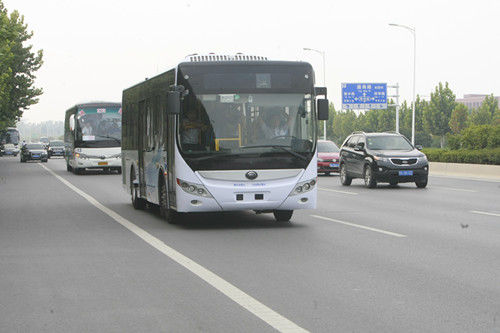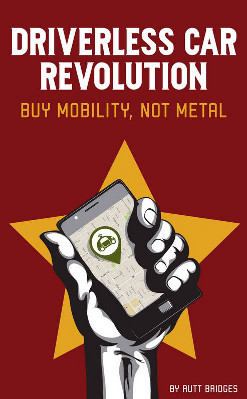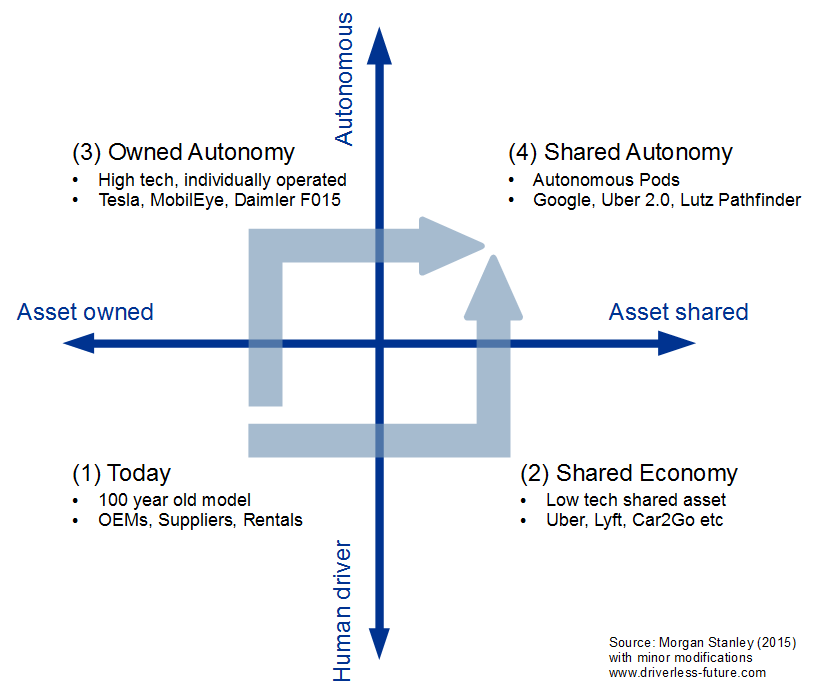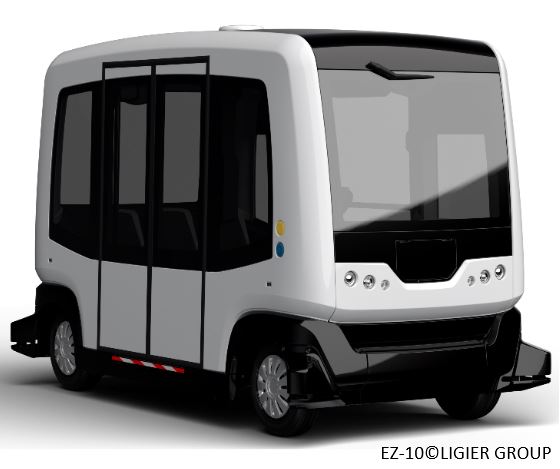As self-driving car technology matures, politicians and regulators find themselves called to action. But the technology is a moving target and views about the technology’s path and impact vary widely. So how should policy makers approach the subject? Here are five guiding principles proposed by Marc Scribner, a transportation and telecommunications policy specialist and research fellow at the Competitive Enterprise Institute. Scribner only discussed the principles briefly at a recent presentation at the Cato Institute. In the following I supplement each of his five bullet points with my interpretation:
1. Recognize and promote the huge potential benefits of self-driving cars
Policy makers need to familiarize themselves with the potential benefits of self-driving cars. First, they need to get the concepts right and clearly distinguish self-driving cars (which can drive without human supervision, even empty, and don’t need additional infrastructure) from other technologies such as driver assistance systems and connected cars. Connected cars and driver assistance systems are certainly also interesting topics but their benefits pale in comparison to the benefits of cars that drive themselves. Besides greatly reducing accidents, self-driving cars also bring individual motorized mobility to those who do not have a driver’s license – including people with disabilities and the elderly. They reduce energy consumption, simplify the introduction of alternative fuels and reduce the load on the road infrastructure.
Policy makers need to recognize that self-driving cars can solve or greatly reduce many longstanding problems. This is not a technology where a wait-and-see attitude is warranted. Politicians need to actively promote this technology. Of course, this does not mean that the technology’s risk should be ignored.
2. Reject the precautionary principle
Safety is a key concern and a key benefit of self-driving cars. There is good reason to expect mature self-driving cars to drive much safer than humans. They are equipped with 360 degree sensors, including cameras, radar and Lidar, are always alert, never tired, don’t drink and adopt a defensive, risk-minimizing driving strategy. But letting the first such cars drive by themselves on public streets is a difficult decision: what if anything goes wrong?
The application of the precautionary principle avoids this situation by requiring the developer to prove that the car is harmless. Unfortunately, proving that a self-driving car is safe is a hard problem and strict application of the principle could significantly delay the introduction of self-driving vehicles.
This weakness of the precautionary principle is well-known: There is the risk that erring on the side of caution when certifying self-driving cars prolongs the current carnage on our on our roads. Unfortunately, we don’t have the luxury to delay a well-functioning self-driving car for a few more years to be extra-sure that everything is perfect when 33,000 people die in traffic accidents per year in the US alone and more than 1 million per year worldwide.
As much as it is not acceptable to let first prototypes roam the streets unsupervised it is not acceptable to delay and delay just to be on the safe side. A middle ground must be found. This is not an easy task for policy makers but one on which lives depend.
3. Don’t presume to know how the technology and law will evolve
Will autonomous vehicle technology gradually evolve from driver assistance systems? Will they first appear on the highway or in low-speed local settings? What new business models will emerge and what role will machines play? Will the US be the first to legalize fully autonomous vehicles or does the Vienna Convention on road traffic really prevent many European Countries from adopting self-driving vehicles? There are so many paths that this technology can take, so many changes in many different areas of business and society, so many proponents and possibly opponents that it is hard to be right about the path of technology and – consequently – of law. It is very dangerous to assume that the technology will evolve in one way, then regulate for this situation and subsequently find that the technology evolves very differently.
4. Let the innovators innovate
This section was originally entitled ‘minimize legislative and regulatory intervention’ and included the goal to give the innovators the space to innovate. But here I differ with Scribner: Unfortunately, transportation law is so much based on the concept of vehicles driven by humans that many laws do need to be changed. Current traffic laws contain so many elements that inhibit progress for this new and safer technology. Autonomous vehicles change the concept of what a car is and the laws need to be updated accordingly. Otherwise innovators will find it hard to make progress. This is a task that should be started immediately – before fully autonomous vehicles are ready for public roads.
5. Preserve technology neutrality
Laws and regulations should be technologically neutral. As much possible, they should avoid favoring a specific technical approach.




